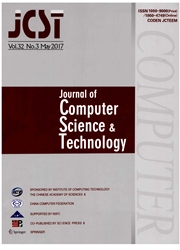

 中文摘要:
中文摘要:
名词短语 anaphoricity 的知识可能有利地在 coreference 分辨率被利用绕过非首语重复法的名词短语的决定。然而,它令人吃惊注意到自动地合并的最近的尝试获得了 anaphoricity 信息进 coreference 决定系统远离期望。这份报纸在经由一个标签繁殖算法决定名词短语的 anaphoricity 改进学习底 coreference 分辨率建议一个全球学习方法。以便在标签繁殖算法消除巨大的计算负担,我们作为批评例子采用加权的支持向量在训练文章代表所有标记 anaphoricity 的 NP 例子。另外,二种内核,即,基于特征的 RBF (光线的基础函数) 有近似匹配的核和卷绕旋转树内核,被探索计算二个名词短语的 anaphoricity 类似。ACE2003 语料库的实验在学习底 coreference 分辨率在名词短语和它的申请的 anaphoricity 决心表明我们的方法的大有效性。
 英文摘要:
英文摘要:
Knowledge of noun phrase anaphoricity might be profitably exploited in coreference resolution to bypass the resolution of non-anaphoric noun phrases. However, it is surprising to notice that recent attempts to incorporate automatically acquired anaphoricity information into coreferenee resolution systems have been far from expectation. This paper proposes a global learning method in determining the anaphoricity of noun phrases via a label propagation algorithm to improve learning-based coreference resolution. In order to eliminate the huge computational burden in the label propagation algorithm, we employ the weighted support vectors as the critical instances in the training texts. In addition, two kinds of kernels, i.e instances to represent all the anaphoricity-labeled NP , the feature-based RBF (Radial Basis Function) kernel and the convolution tree kernel with approximate matching, are explored to compute the anaphoricity similarity between two noun phrases. Experiments on the ACE2003 corpus demonstrate the great effectiveness of our method in anaphoricity determination of noun phrases and its application in learning-based coreference resolution.
 同期刊论文项目
同期刊论文项目
 同项目期刊论文
同项目期刊论文
 Label propagation via bootstrapped support vectors for semantic relation extraction between named en
Label propagation via bootstrapped support vectors for semantic relation extraction between named en 期刊信息
期刊信息
